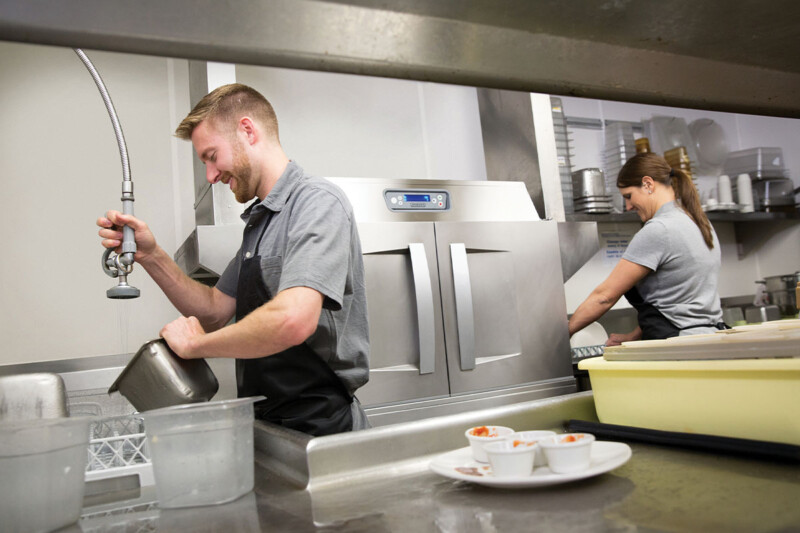How to Choose a Steam-Jacketed Kettle
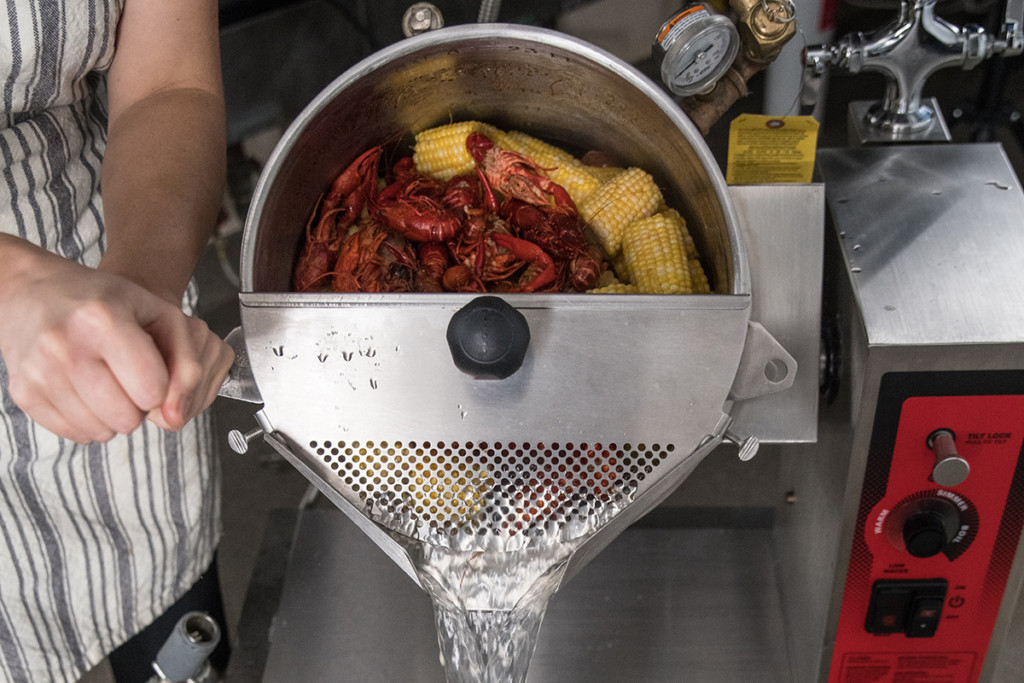
As healthcare operations advance more nutritional and flavorful menu options, steam-jacketed kettles play an important role. Soups, stews, broths and sauces made from scratch to maximize freshness and nutrients are ideal for kettles. Many operations make these menu items in stockpots over an open flame or hot burner, but without constant temperature supervision and stirring, these products can scorch or boil over. Delicate dairy and chocolate products are very heat-specific and turning the heat up too high or down too low can ruin a whole batch.
Steam kettles hold food temperatures steady within a range of a few degrees of the set temperature. Steam inside the kettle’s jacket provides heat to the kettle’s contents; by adjusting the pressure of that steam, the temperature rises or falls to the desired setting. By transferring heat to all sides of the product, kettles eliminate the hot spots found at the bottom of stockpots and provide much more even heat distribution. Typically, stationary kettles have full jackets around the entire kettle while tilting kettles have jackets that cover two-thirds of the kettle, allowing for a spout at the top; there are exceptions, so check the spec sheets of the models you’re considering.
Furthermore, because heat transfers to the kettle’s contents on all sides, it reaches the desired temperature faster than a stockpot sitting on a heat source; one manufacturer claims that kettles cook food 30% faster than stockpots.
What Size Do I Need?
Steam-jacketed kettles come in a wide range of capacities, from less than a gallon to upward of 200 gal. or more. Countertop models come in various capacities up to 20 gal. while floor models generally start with 20-gal. capacities and go up from there.
When specifying size, think about which of your menu items you plan to cook in the kettle. What size portions do you serve and how many of them do you need? If you serve approximately 2,000 4-oz. portions a day, you’ll need at least a 60-gal. floor model.
One advantage to using a steam kettle in this example, is that you can make your entire day’s batch of chicken soup at one time. Not only does this eliminate the need to make batch after batch in stockpots on a range, it saves on labor (since no one needs to fill, stir and empty those pots), reduces the chance for injury when moving and carrying full stockpots and potentially frees up range burners for other uses. It also provides a consistency of flavor that’s hard to get when making multiple batches in smaller volumes.
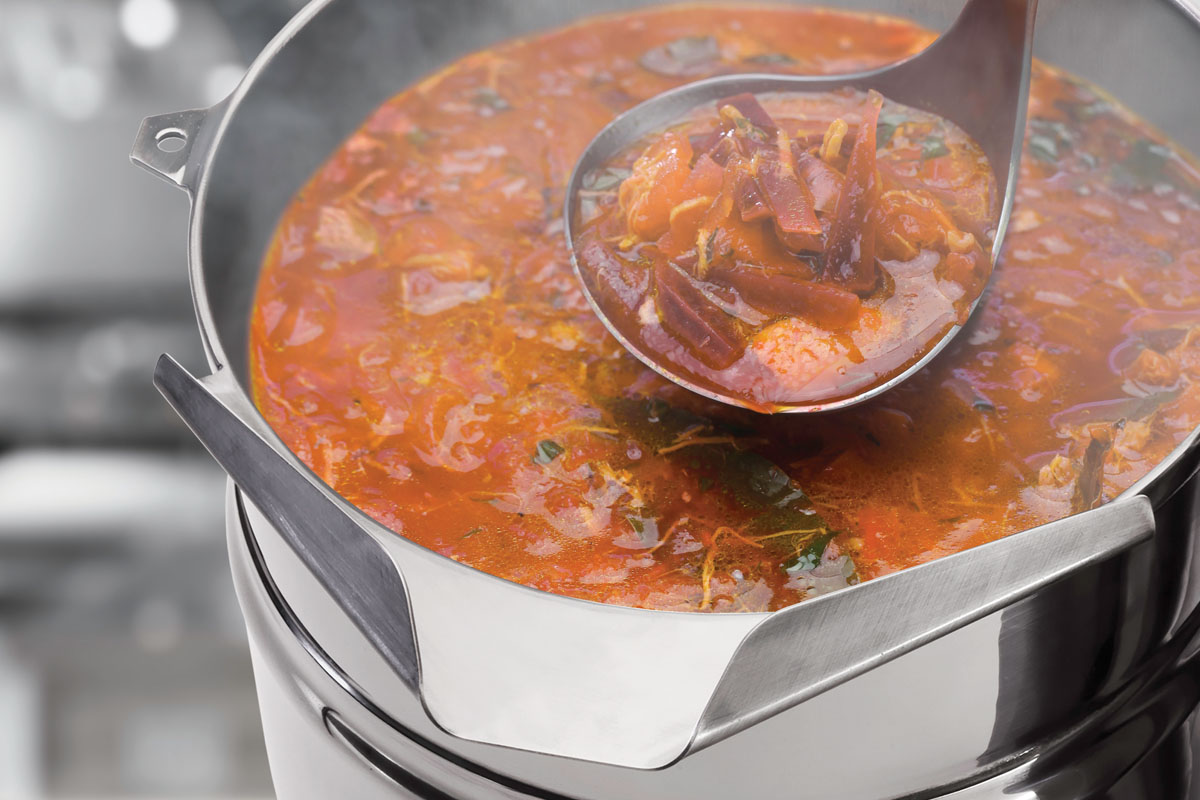
The size and number of portions of soup you serve in a day will help you determine what size kettle you need.
— Courtesy of Groen
Powering Kettles
Kettles get their steam in one of three ways: gas, electricity or direct steam. The latter requires a connection to your facility’s boiler: Water turns to steam at 212°F, so that’s the temperature at which it arrives in the kettle’s jacket; adjusting the pressure gets it up to the cooking temperature you need. While this has its advantages, one maker cautions that if your boiler goes down, so do your kettles.
Choosing between gas and electric heating systems basically comes down to which utility is cheaper in your area. Manufacturers also point out that countertop models are most often electric-powered and, because they don’t need a stationary gas connection, can be moved to a different location when necessary. Gas comes into play more often with large floor models that stay in one place their entire lifetime.
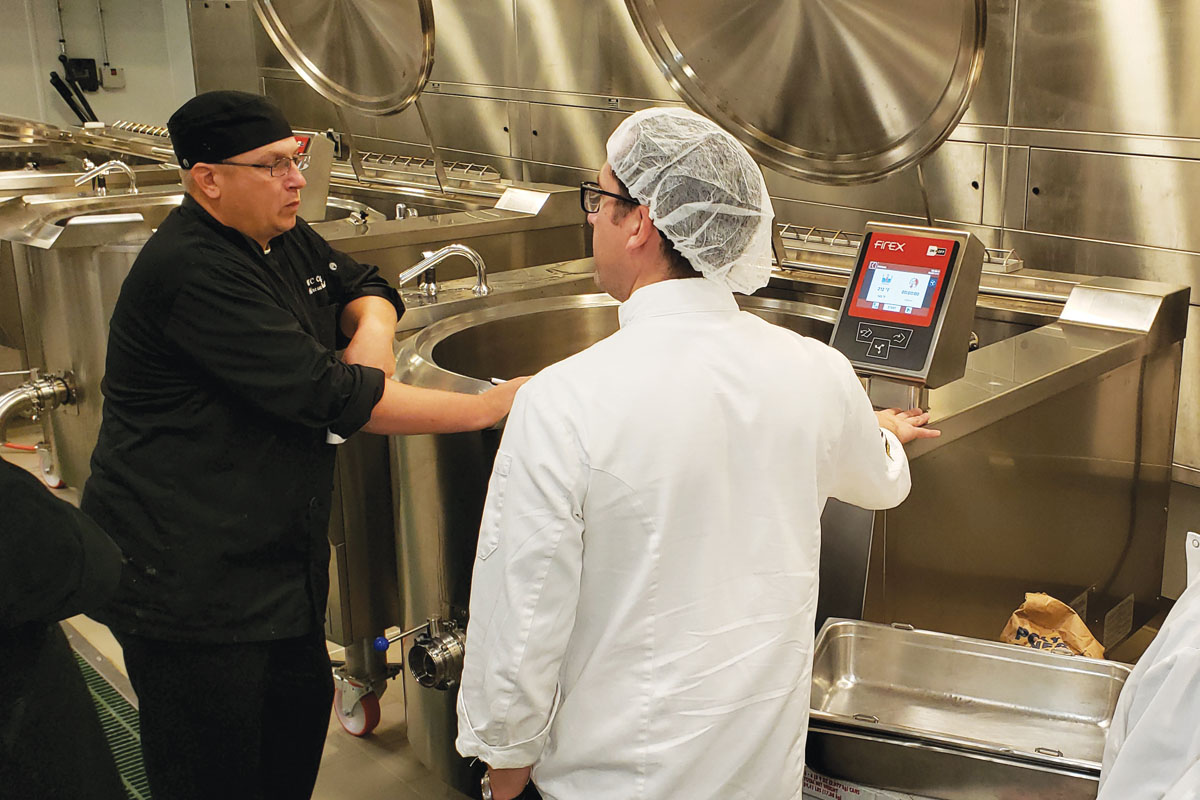
For large operations, kettles can turn out very high volumes of menu items.
— Courtesy of Middleby
Controlling Temperature
Since steam kettles debuted decades ago, temperature controls have mainly consisted of a dial with either a numeric scale of one to 10 or broad categories of warm, simmer and boil. All regulate the pressure of the steam in the jacket which raises or lowers the cooking temperature. A pressure gauge showing 50 psi might translate to approximately 298°F while 25 psi means 267°F.
Recently, some makers started offering temperature-specific controls. Digital readouts display the temperature of the food in the kettle. Some controls let you program the temperature and cook time for each product; presets let your staff make these items consistently each time.
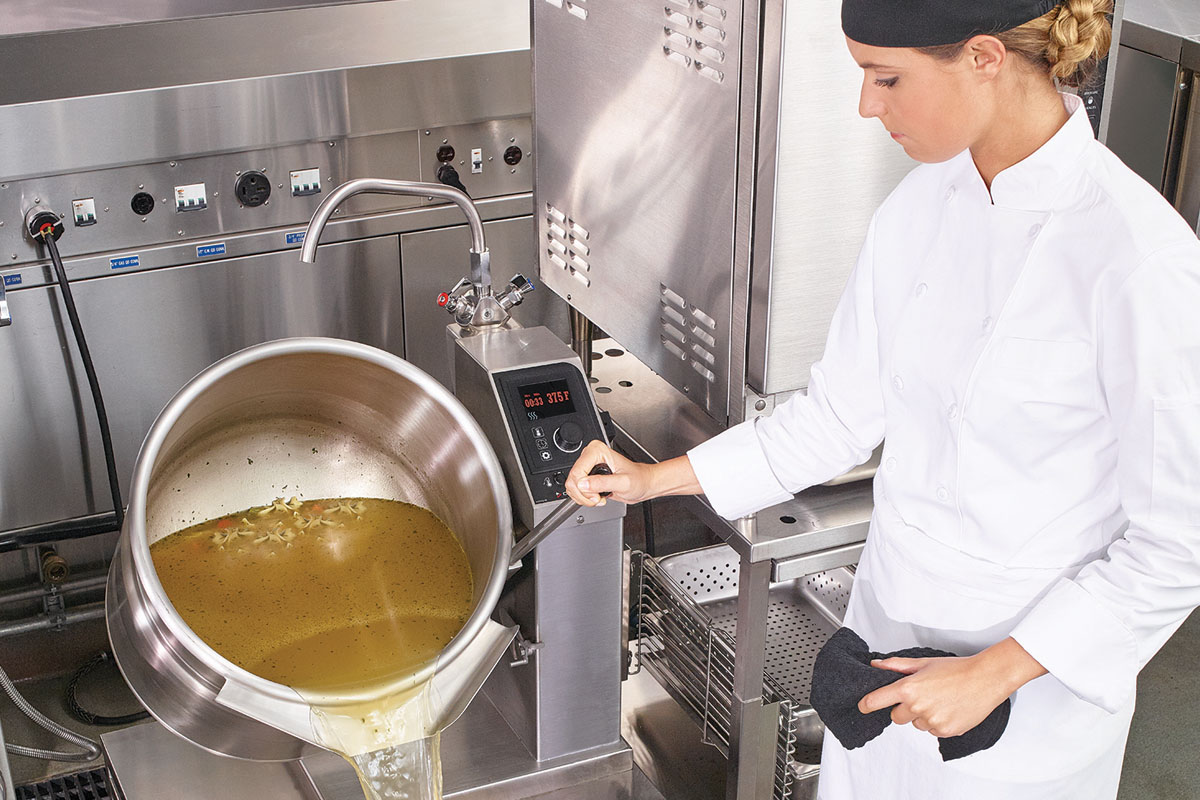
Some units tilt so you can pour contents.
— Courtesy of Cleveland.
Tilt Matters
While some floor kettles tilt to empty cooked product into hotel pans or containers, others come with a tangent draw-off valve that allows you to drain product from the bottom of the vessel. Optional pan carriers hold pans steady and level when pouring product. Think through your present menu as well as items you may consider in the future; chunky chilis and stews may drain with no problem through a 3-inch valve but get clogged in a 2-inch valve.
Tilting kettles slant in a variety of ways to pour out contents; some have power-assisted tilts while others use manual cranks or handles you pull to bring the lip down. Consider what works best for your employees, factoring in their height and strength.
RELATED CONTENT
- Advertisement -
- Advertisement -
- Advertisement -
TRENDING NOW
- Advertisement -
- Advertisement -
- Advertisement -


